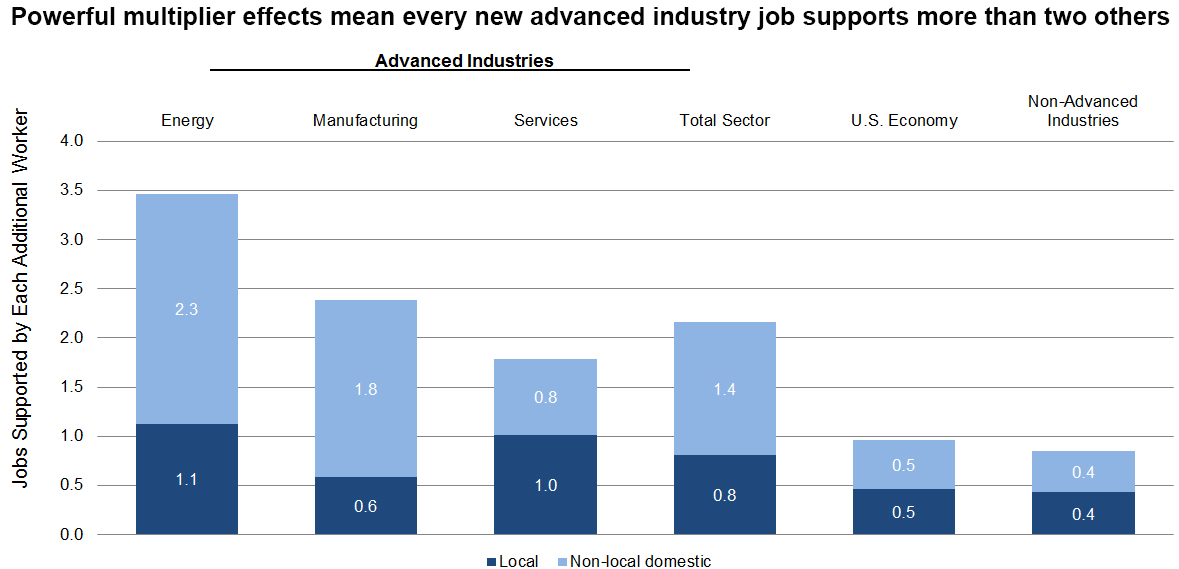With the Hamilton’s Project’s “jobs gap” showing we are 4 million jobs below pre-recession employment levels, one could question our spotlighting of “advanced industries” as a prerequisite for broad prosperity. That’s because the sector—characterized by high R&D spending and a disproportionate share of technical workers—employs just 8.7 percent of the workforce. And it’s true that the sector’s 12.3- million worker labor force, while sizable, is not massive.
Yet, a closer examination shows that advanced industries actually employ more workers than most other sectors including construction, mining, education, leisure, and finance services. The largest non-advanced industry sector in the economy—health care—is in fact only 20 percent larger.
But while retail and health care directly employ more workers, advanced industries actually support a greater number of American jobs through their extensive purchasing, long supply chains, and high wages. Advanced industries directly purchase $236,000 per worker in intermediary goods and services, which is four times higher than the average for other industries. These industries create jobs across the economy in machinist shops, accounting firms, and shipping companies. Additionally, because wages in the sector are double the national average advanced industries workers purchase more local goods and services, creating more jobs in their regions. Here’s what those multipliers look like:

All told, each new advanced industry job creates 2.2 jobs in other industries—.08 jobs locally and 1.4 outside of the region. That means directly and indirectly the sector supports almost 39 million workers—nearly one-fourth of all U.S. employment.
To be sure, size isn’t everything. And in fact, it is the high quality rather than the quantity of advanced industry enterprises—whether on indices of innovation and productivity or exporting—that makes the sector so important. And yet size matters as economic leaders seek to generate sufficient numbers of quality jobs in a nation still short of them. America’s advanced industries are clearly not the whole solution to the nation’s jobs problem, but they are part of it.



Commentary
U.S. advanced industries: Not so small after all
February 19, 2015